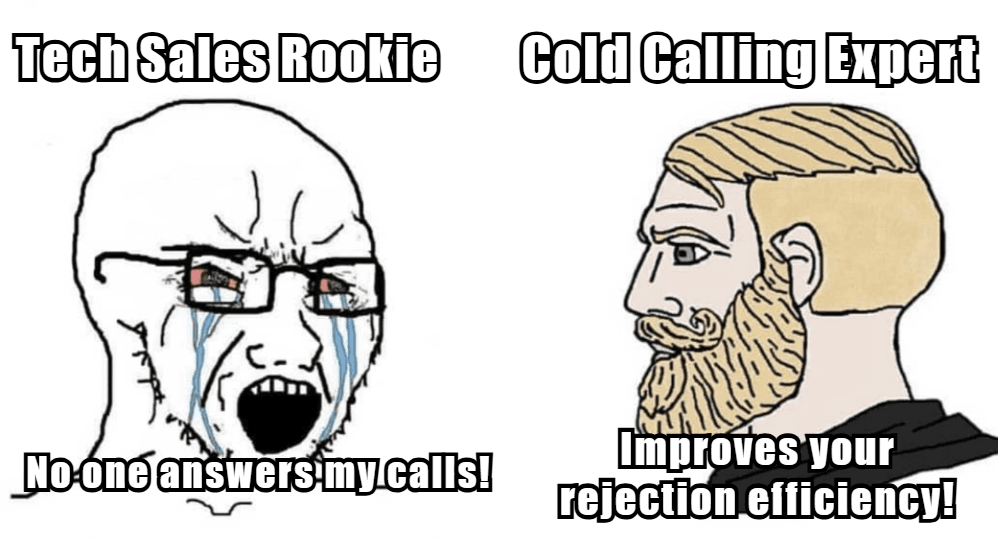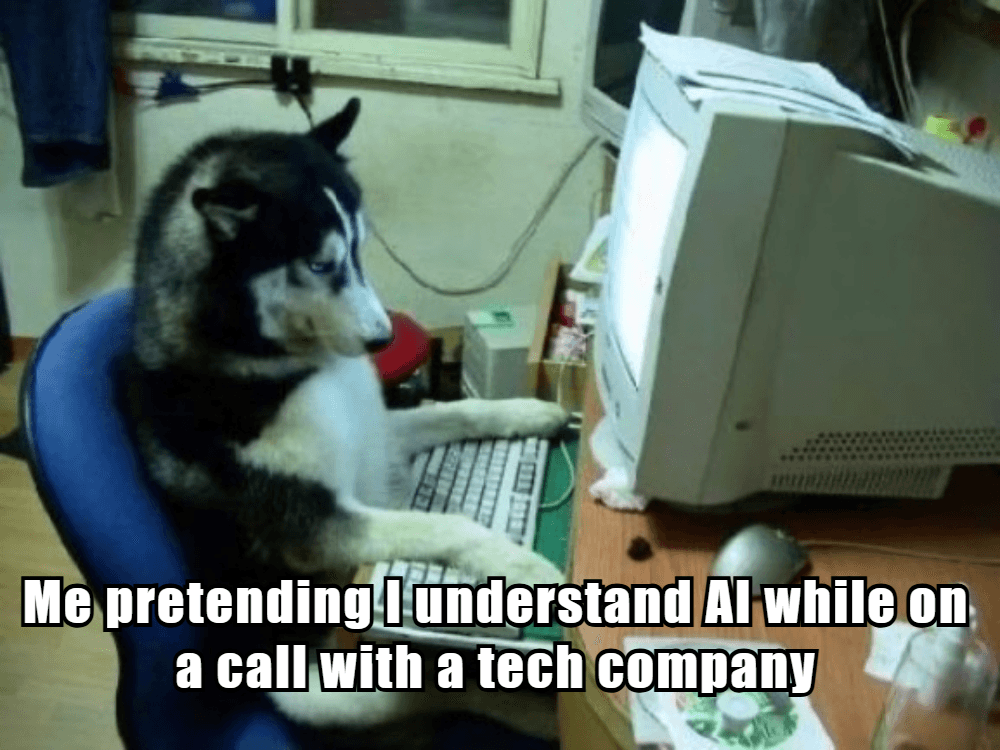In the fast-paced world of tech sales, cold calling remains a crucial strategy for reaching new customers and driving business growth. However, crafting a successful cold call script is more than just reading from a page; it's about engaging prospects, addressing their pain points, and showcasing the value of your product. A well-designed tech sales cold call script can be the difference between securing a meeting and hanging up on a potential lead. In this article, we'll explore the art of creating effective cold call scripts, providing insights into structure, examples, and tips for maximizing success in tech sales.
Understanding the Structure of a Cold Call Script

A successful cold call script follows a structured approach that ensures clarity, engagement, and effectiveness. Here are the key components:
Introduction: Start by introducing yourself and your company, ensuring you grab the prospect's attention immediately. This is your chance to establish rapport and set the tone for the call.
Permission to Proceed: Always ask for permission to continue the call, respecting the prospect's time and ensuring they are open to hearing your pitch.
Problem Identification: Highlight the challenges or pain points your product addresses. This helps prospects see the relevance and potential benefits of your solution.
Solution Presentation: Clearly articulate how your product solves the identified problems, using specific examples or case studies to illustrate its value.
Handling Objections: Anticipate and address potential objections by providing concise, data-backed solutions. This shows you've considered their concerns and have a thoughtful approach.
Call to Action: End the call by setting a clear next step, such as scheduling a meeting or demo, to keep the conversation moving forward.
Crafting an Engaging Opening

The opening of your cold call script is the first impression you make on a prospect, and it can either capture their attention or lead to a quick hang-up. Crafting an engaging opening requires a thoughtful approach that balances personalization, relevance, and respect for the prospect's time.
Here's a deeper dive into how to create an effective opening:
Personalization

Personalization is key to making your opening more engaging and relevant. It shows that you've taken the time to research the prospect and understand their specific situation. Here are some ways to incorporate personalization:
Recent Achievements: Mention a recent achievement or milestone of the company. This could be a new product launch, an expansion into a new market, or a notable partnership. For example:
Rep: "Hi [Prospect’s Name], I saw that [Company] recently launched [new product]. Congratulations on this achievement! I wanted to reach out because our solution can help enhance the efficiency of your product development process."
Challenges Faced: If you're aware of specific challenges the company is facing, you can tailor your opening to address those challenges directly. This demonstrates that you understand their pain points and are there to offer a solution.
Rep: "Hi [Prospect’s Name], I noticed that [Company] has been discussing [specific challenge] in recent interviews. Our product is designed to help companies like yours overcome similar challenges by [briefly describe the solution]."
Start with a Question

Starting your call with a question is an effective way to engage the prospect immediately. It encourages them to participate in the conversation and helps you gauge their interest or identify potential pain points. Here are some examples of opening questions:
Interest-Based Question: Ask if they are interested in improving a specific aspect of their business. For example:
Rep: "Hi [Prospect’s Name], are you currently looking for ways to enhance your team's productivity and efficiency?"
Pain Point Identification: Ask about specific challenges they might be facing. For example:
Rep: "Hi [Prospect’s Name], are you experiencing any difficulties with [specific area of concern]?"
Show Respect for Time
Always begin by acknowledging the prospect's time constraints and asking if it's a good time to talk. This shows professionalism and consideration, setting a positive tone for the rest of the call.
Time Acknowledgment: Start by acknowledging that you respect their time and ask if they have a minute to talk. For example:
Rep: "Hi [Prospect’s Name], I hope I'm not catching you at a bad time. Do you have a minute to discuss something that might be of interest to you?"
Brief Introduction: Keep your introduction brief and to the point. Avoid lengthy explanations or pitches at this stage. Instead, focus on setting up the conversation and ensuring the prospect is open to hearing more.
Examples of Effective Openings

Here are some examples of effective cold call openings that incorporate personalization, questions, and respect for time:
Example 1: Personalized Opening
Rep: "Hi [Prospect’s Name], I saw that [Company] was featured in [recent publication] for its innovative approach to [industry]. Congratulations! I wanted to reach out because our solution can help you further enhance your [specific area]. Do you have a minute to discuss?"
Example 2: Question-Based Opening
Rep: "Hi [Prospect’s Name], are you currently exploring ways to improve your data management processes? Our product has helped similar companies streamline their operations and reduce costs. Is this something you'd be interested in learning more about?"
Example 3: Time-Respectful Opening
Rep: "Hi [Prospect’s Name], I hope I'm not interrupting anything important. Do you have a minute to talk about how our tool can help address [specific challenge] that companies like yours often face?"
Examples of Effective Cold Call Scripts

Here are some examples of cold call scripts that have proven successful in tech sales:
Example 1: Problem-Focused Script
Rep: Hi [Prospect’s Name], this is [Your Name] from [Company]. I noticed that [Company] is expanding its operations, which often leads to challenges in managing data efficiently. Our product helps streamline data management processes, reducing costs and improving productivity. Would you like to discuss how this could benefit your business?
Example 2: Follow-Up Script
Rep: Hi [Prospect’s Name], I’m calling back as discussed. Did you get a chance to review the information I sent over? Our solution can help you generate [specific results] by addressing [pain point]. Can I ask a few questions to better understand your needs?
Example 3: CEO Cold Call Script
Rep: Hi [CEO’s Name], I hope you have a minute. I’m reaching out from [Company]. We work with similar tech companies to enhance their [specific area]. I’d love to schedule a brief call to discuss how our tool can support your business goals. Would Thursday at 1 PM work for you?
Comparison of Cold Call Scripts
Script Type | Key Features | Best For | Example |
Problem-Focused | Addresses specific pain points, offers solutions | Prospects with known challenges | Example 1 |
Follow-Up | Re-engages prospects and gather feedback | Leads who have shown interest | Example 2 |
CEO Script | Directly targets decision-makers, concise pitch | Senior-level prospects | Example 3 |
Personalized | Uses prospect-specific details, builds rapport | New leads with limited information | Personalization script1 |
Objection Handling | Anticipates and addresses concerns | Prospects with common objections | Objection script1 |
Conclusion
Crafting a successful tech sales cold call script requires a deep understanding of your product, the prospect's needs, and the art of effective communication. By structuring your script to engage, inform, and address pain points, you can significantly improve your chances of securing meetings and driving sales growth. Whether you're a seasoned sales professional or just starting out, mastering the cold call script is essential for success in the competitive world of tech sales.
Frequently Asked Questions (FAQs)
Q: What Makes a Cold Call Script Effective?
A: An effective cold call script is structured, engaging, and tailored to the prospect's needs. It should clearly articulate the value of your product and address potential pain points.
Q: How Do I Handle Objections During a Cold Call?
A: Anticipate common objections and prepare concise, data-backed responses. Stay positive and focus on the benefits of your solution.
Q: What Role Does Personalization Play in Cold Calling?
A: Personalization helps build rapport and shows you've done your research. It can significantly increase engagement and interest in your pitch.


